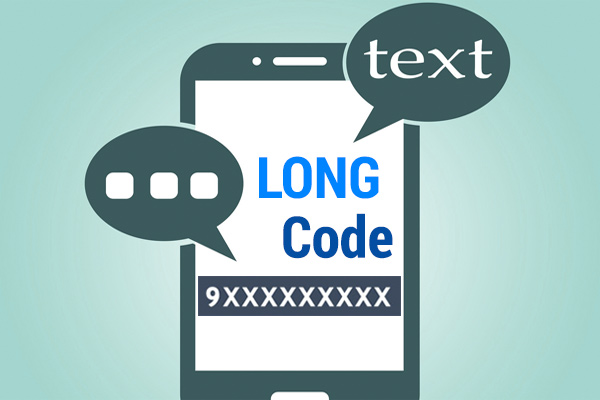Long code SMS services have become a staple communication tool for businesses globally, enabling them to engage with customers in a personalized and efficient manner. However, understanding how billing works with long code SMS services is crucial for businesses to manage their costs effectively. In this article, we’ll delve into the intricacies of long code SMS billing, exploring different billing models and factors that affect billing. The long code SMS service provider in India offers comprehensive communication solutions for businesses seeking efficient text messaging capabilities.
Introduction to Long Code SMS Service
Before diving into billing, let’s briefly touch on what long code SMS services entail. Long codes are standard phone numbers, typically 10 digits in length, used for person-to-person communication via text messaging. In the context of businesses, long code SMS services allow companies to send and receive text messages with customers, facilitating various interactions such as customer support, notifications, and marketing campaigns.
Understanding Billing in Long Code SMS Service
Billing in long code SMS services revolves around different models, each with its own advantages and considerations. Understanding these models is essential for businesses to choose the most suitable option based on their needs and budget.
Different Types of Billing Models
The three primary billing models in long code SMS services are per-message billing, monthly subscription billing, and credits-based billing. Let’s explore each of these in detail.
Per-message Billing
Per-message billing, as the name suggests, involves charging a fee for each message sent or received through the long code. This model offers flexibility, as businesses only pay for the messages they use, making it suitable for those with fluctuating messaging volumes.
Explanation of Per-message Billing
Under per-message billing, businesses are billed based on the number of messages sent or received. The cost per message may vary depending on factors such as the destination country and message length.
Pros and Cons
Pros:
- Cost-effective for low-volume users: Businesses with sporadic messaging needs benefit from paying only for the messages sent.
- No commitment: There’s no long-term commitment, allowing businesses to adjust their usage as needed without contractual obligations.
Cons:
- Potential for high costs: For high-volume users, per-message billing can lead to significant expenses compared to other billing models.
- Lack of predictability: The variable nature of costs makes it challenging to predict monthly expenses accurately.
Monthly Subscription Billing
Monthly subscription billing involves paying a fixed fee at regular intervals, typically monthly, for a predetermined number of messages or a messaging quota. This model offers predictability and cost stability, making it suitable for businesses with consistent messaging needs.
Explanation of Monthly Subscription Billing
With monthly subscription billing, businesses subscribe to a plan that offers a specific number of messages or credits per month. Unused messages usually do not carry over to the next billing cycle.
Pros and Cons
Pros:
- Cost predictability: Businesses can budget more effectively, knowing the fixed monthly expenses for their messaging needs.
- Volume discounts: Many providers offer discounts for higher subscription tiers, making it cost-effective for businesses with substantial messaging requirements.
Cons:
- Unused messages: Unused messages typically do not roll over to the next month, potentially leading to wasted resources.
- Limited flexibility: Businesses may need to upgrade their subscription if they exceed the allotted message quota, leading to additional costs.
Credits-based Billing
Credits-based billing involves purchasing credits upfront, which are then used to send messages. Each message sent deducts a certain number of credits from the account. This model offers flexibility and scalability, allowing businesses to adjust their usage based on demand.
Explanation of Credits-based Billing
In credits-based billing, businesses buy credits in bulk, with the cost per credit depending on the volume purchased. Messages are then deducted from the available credits, with the option to replenish credits as needed.
Pros and Cons
Pros:
- Flexibility: Businesses can scale their messaging volume up or down by purchasing more credits as needed.
- No monthly commitment: Unlike monthly subscriptions, credits do not expire, providing businesses with more flexibility in managing their messaging budget.
Cons:
- Complex pricing: Calculating the cost per message can be challenging due to varying credit prices and message lengths.
- Risk of depletion: Businesses need to monitor credit balances to avoid running out of credits unexpectedly, which can disrupt communication.
Factors Affecting Billing
Several factors can influence the cost of long code SMS services, regardless of the billing model chosen. These include message length, message delivery, and geographical location.
Message Length
Longer messages typically incur higher costs, as they require more characters to transmit. Businesses should optimize their messages to convey information concisely to minimize expenses.
Message Delivery
The delivery of messages, especially to international destinations, may incur additional charges depending on the service provider and the recipient’s network.
Geographical Location
The destination of the message plays a significant role in determining the cost, with international messages often costing more than domestic ones due to interconnection fees and regulatory requirements.
Choosing the Right Billing Model
Selecting the appropriate billing model depends on various factors such as messaging volume, budget, and predictability preferences. Businesses should evaluate their needs carefully and choose the model that offers the best balance of cost-effectiveness and flexibility.
Conclusion
Billing in long code SMS services is a multifaceted aspect that requires careful consideration to manage costs effectively. By understanding the different billing models, factors influencing billing, and their respective pros and cons, businesses can make informed decisions to optimize their messaging strategy and budget.
About Us:
“Space Edge Technology” appears to be a term that might refer to a company, concept, or technology related to space exploration or utilization. However, without further context, it’s challenging to provide specific information.

